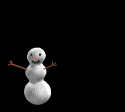![]()
![]()
Introduction to Biology
1. Study major biology prefixes/suffixes.
2. List all the major metric unit prefixes and their values.
3. List and describe the major characteristics shared by all living things.
4. List the steps of the scientific method.
5. Define independent and dependent variables. How would you graph the two?
6. When do you use different types of graphs?
7. Explain why all experiments must have a control group.

8. Review the parts of a microscope.
9. How do you prepare a slide?
10. What is the maximum power of the microscopes we use in class? How is the magnification power calculated?
11. Differentiate between the magnification and resolving power of a microscope.



Ecology
12. Differentiate between an ecosystem, a community, and a population.
13. Compare producers, consumers, and decomposers.
14. Explain why a consumer cannot live without producers even if they do not eat them.
15. Explain how food chains, food webs, and food pyramids show how energy moves through ecosystems. What is the rule of ten?
16. Describe the process of succession. (including pioneer, seral, & climax communities)
17. Compare the following types of relationships: commensalism, mutualism, and parasitism. What are the types of competition?
18. List and describe the major biomes.
19. Draw and describe the population curves discussed in class.What is carrying capacity?
20. What are limiting factors? Give examples.
21. What is biological magnification?
22. Describe the major cycles in an ecosystem.

Biochemistry
23. List and describe the building blocks,
functions, etc. of the four types of organic molecules.
24. List the 3 subatomic particles with their charges and location within the atom.
25. What type of organic molecule is an enzyme? What do they do?
26. How are enzymes usually named?
27. The molecule that the enzyme is “working on” is called a ____________.
28. Compare the two models of how an enzyme can work.
29. Describe the process of hydrolysis and condensation reactions.
30. List several major characteristics of water.

Cells
31. What is stated in the cell theory?
32. What are the major types of cells? How are they similar? How are they different?
33. What scientists were important in the discovery of cells? What were their contributions?
34. What are the parts of plant and animal cells? Describe the structure and function of each part.

Cell Transport
35. Describe the structure and function of the cell membrane.
36. What is the difference between osmosis and diffusion?
37. What is the difference between active transport and passive transport?
38.What are the different kinds of active transport? What are they used for?
39. What is necessary for facilitated diffusion to occur?
40. What factors can affect the rate of diffusion?
41. What would it mean if a solution was hypertonic? hypotonic? isotonic?
42. If plasmolysis occurs, what happens and why?
43. If cytolysis occurs, what happens and why?
44. How does cell size relate to cell transport?


Cell Energy
45. What is photosynthesis?
46. What are the reactants of photosynthesis? Products?
47. What is cellular respiration?
48. What are the reactants of cellular respiration? Products?
49. How is bromthymol blue used to indicate whether photosynthesis or cellular respiration is occurring?
50. Explain the ATP-ADP cycle.
51. Explain the difference in aerobic and anaerobic respiration. Include materials, conditions, cell types, and products involved in each.
52. Compare and contrast photosynthesis and respiration (reactants, products, location, cell types, conditions).

Cell Reproduction
53. What are the two types of eukaryotic cell division?
54. How does cell division in prokaryotes occur?
55. Describe the process of mitosis. Include a description of the phases of the cell cycle.

